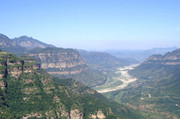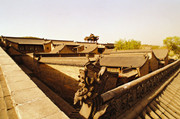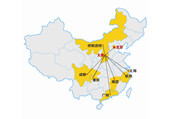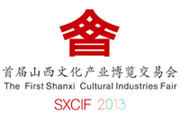Mansion of the Cao Family
( chinadaily.com.cn )
Updated: 2013-08-14
(Photo/Xinhua)
Mansion of the Cao Family, also known as Sanduotang Museum, is located in the northeastern corner of Beihuang village five kilometers to the southwest of Taigu county seat, Shanxi province. It is adjacent to Nantongpu railway and No.108 national highway in the north. The mansion takes up a land of 10,638 square meters, with 6,348 square meters area of structure. It keeps architectural complex of Ming, Qing dynasties and Republic of China period. It exhibits numerous treasures.The mansion was opened to the public in October 1995. It has become a favorable tourism destination in central Shanxi. It is a cultural relic under provincial protection. On May 25, 2006, the mansion, as an ancient architecture of Ming and Qing dynasties, was approved by State Council into the sixth group of cultural relics under national protection.
Cao Bangyan, an early ancestor of the Cao Family, was a native of Jinci Huata village of Taiyuan. He made a living by selling earthen pots. During the reign of Emperor Hongwu of Ming Dynasty, he moved the family to Beihuang village of Taigu county. He concurrently worked as a farmer. When the Cao family descended to the 14th generation, there was a man named Cao Sanxi, who braved the journey to do business in northeast China and reaped profits. The Cao family set up many shops in northeast China.
When the Manchu troops entered Shanhai Pass in the 17th century, Cao moved his businesses back to inland areas. He set up a shop first in Taigu and promoted the business nationwide. When it came to the reign of Emperor Daoguang and Emperor Xianfeng, the Cao family reached the height of splendors. They set up 640 shops across the country, with 12 million silver dollars assets. The Cao family employed 3,700 workers. There was a saying that “the Cao family has a business in any place that sparrows fly.” Later, the Cao family eyed the world market by selling Chinese tea and cloths to Japan, Moscow, Paris and London. It imported steel from Japan, ginseng from Korea and metal products from Russia. The Cao family explored a Tea Road between Shanxi and Mongolia, rivaling the historically famous Silk Road.




